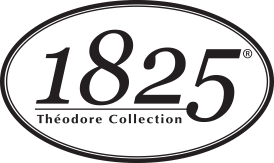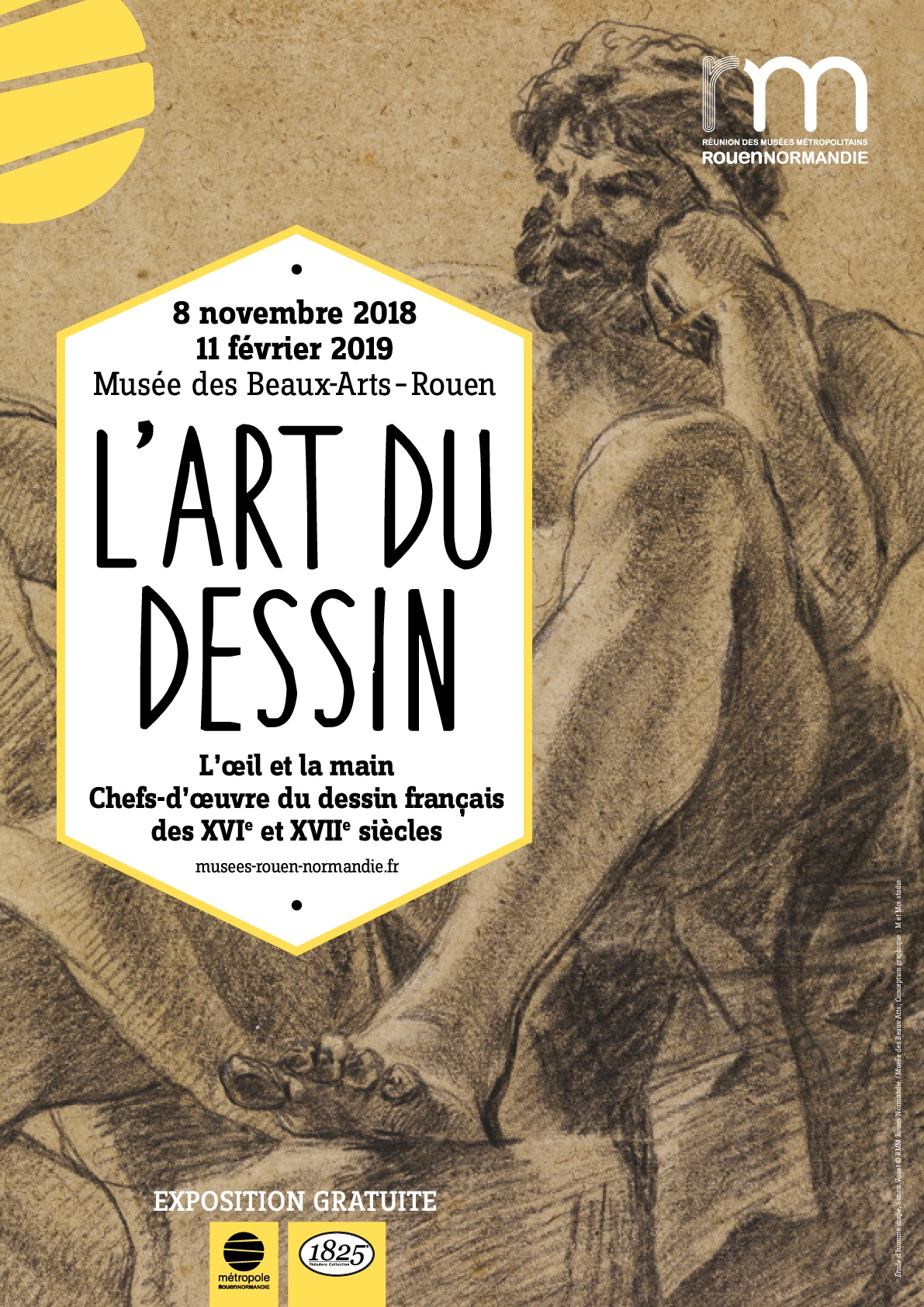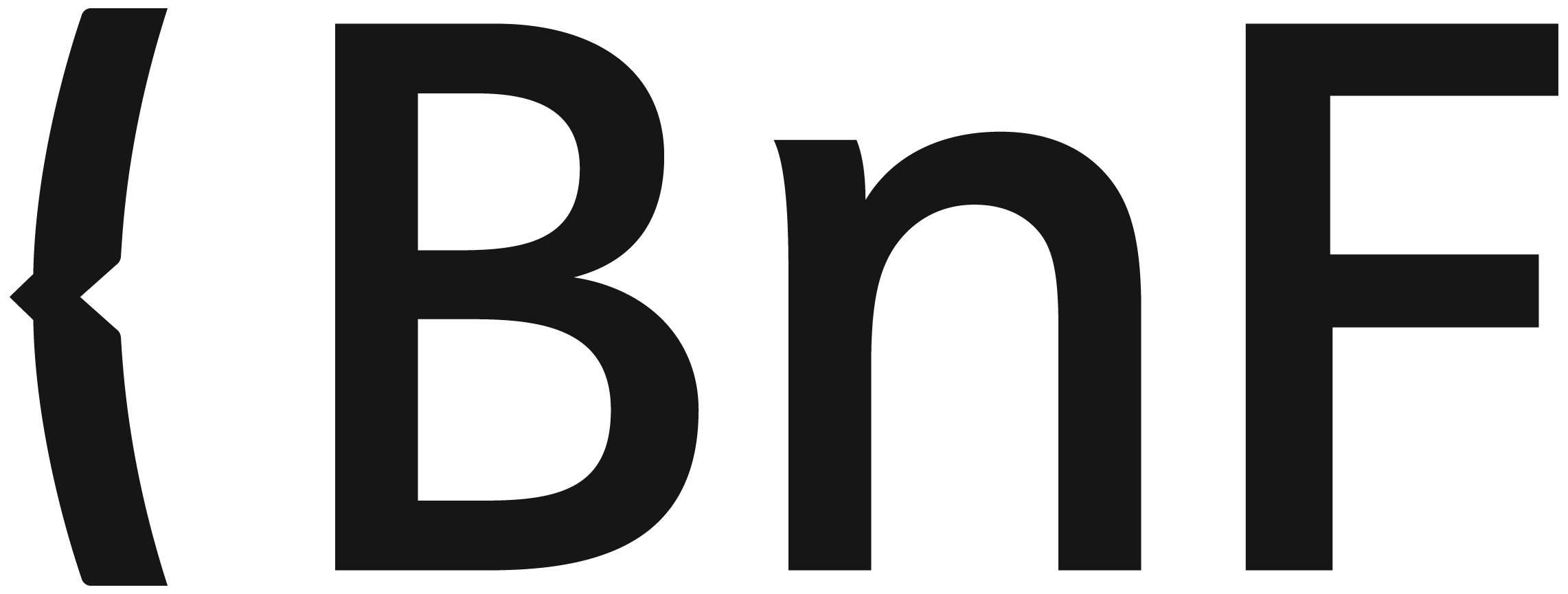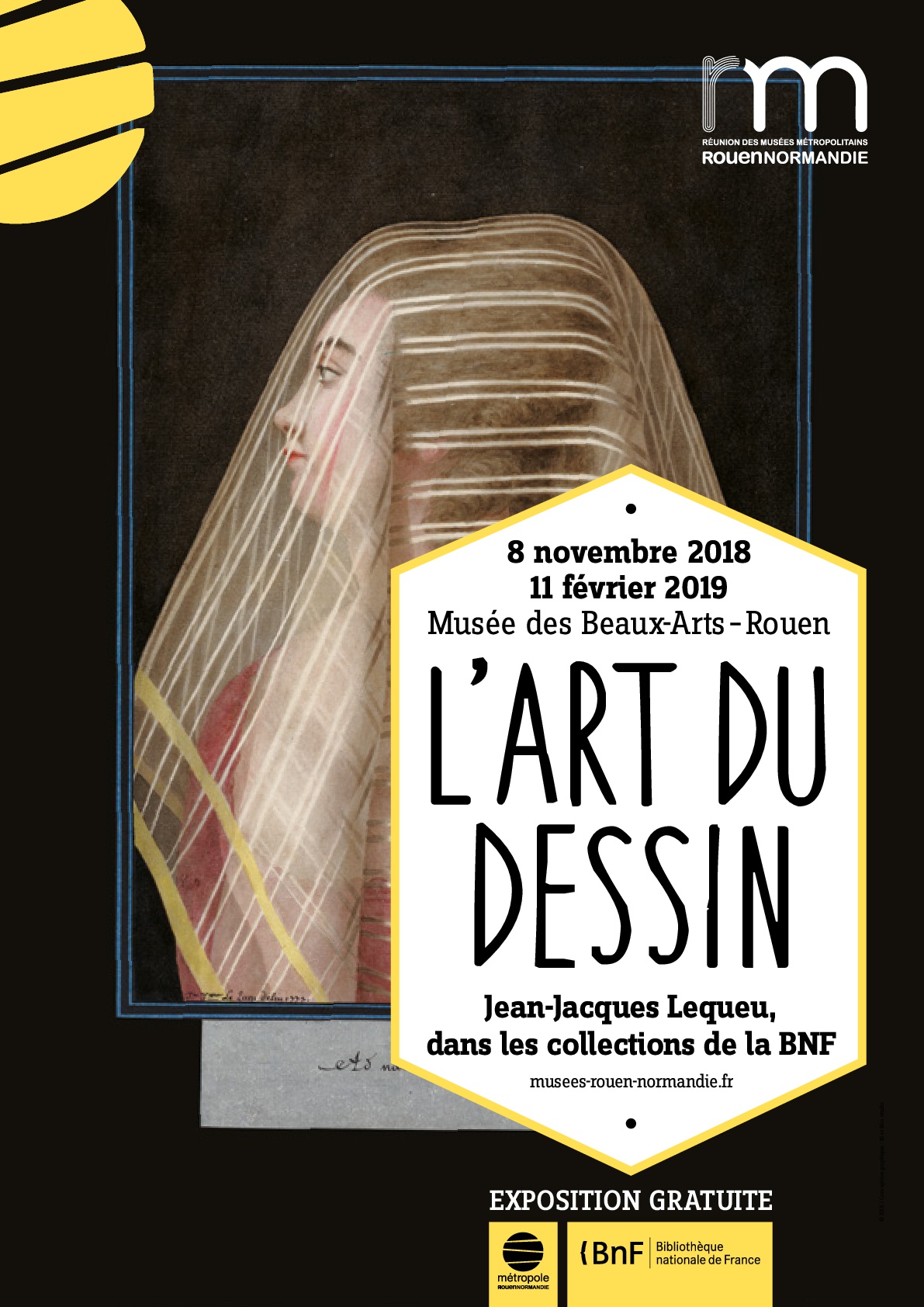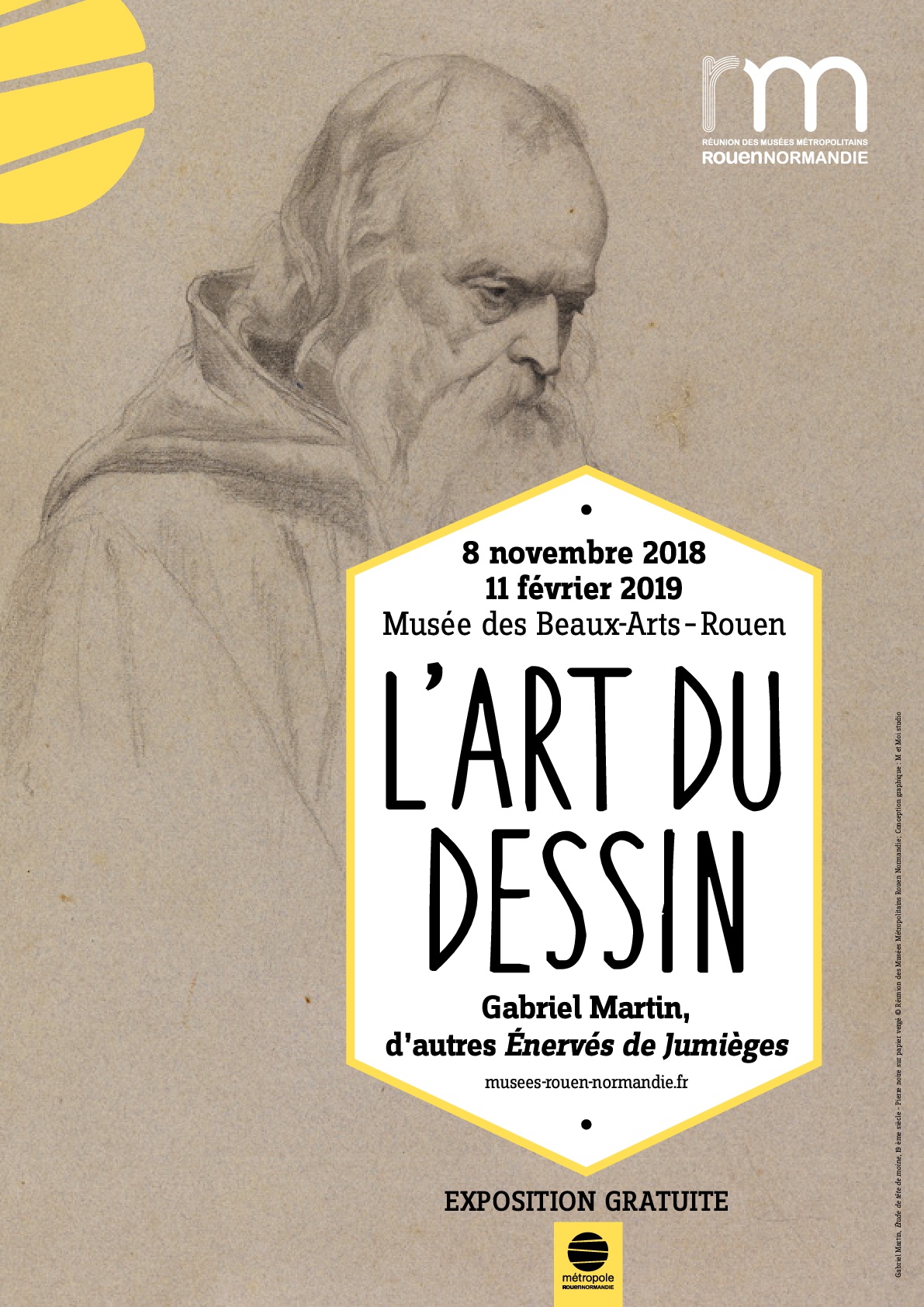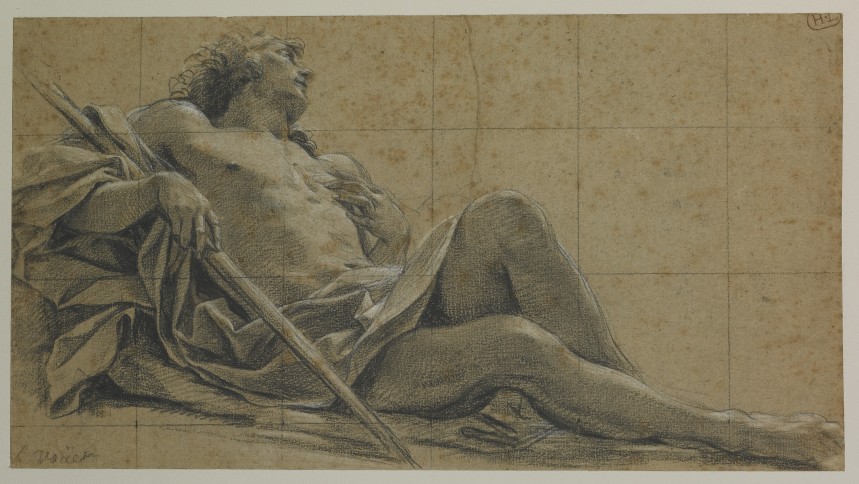
The art of drawing – Drawing practices: from the 16th century to nowadays

Due to their fragility, the artworks on paper are the less visible part of the collections. That is why it is necessary to recall the capital place that drawing hold into the artistic creation. The richness of Rouen’s graphic arts cabinet allows the Fine arts museum to be a reference in this domain.
The presentation of an exhibition dedicated to the museum’s ancient drawings provides the opportunity of an ambitious proposition that transcends the eras and confronts the approaches in order to question the sense of this mysterious association that is the eye and the hand, from which originates each graphic work. It is the occasion to tie links with prestigious patrimonial institutions ; Aside from the retrospective to Jean-Jacques Lequeu (1757-1826) that the museum of the Petit Palais in Paris dedicates to this visionary architect, an exceptional partnership tied with the Bibliothèque Nationale de France (“National Library of France”) makes it possible to present exclusive artworks from a figure still unknown to the Lumières who was born in Rouen in the middle of the 18th century.
Finally, in order to complete this overall vision of drawing throughout the centuries, the museum invites three contemporary artists: The drawers Jérôme Zonder, Gilgian Gelzer and Sarkis, with a poetic proposition evoking through video and photography the power of the line.
Masterpieces of the French drawing in the 16th and 17th centuries
After the exhibition Trésors de l’ombre : Chefs-d’oeuvres du dessin français du 18e siècle (“Treasures from the shadow : Masterpieces of the French drawing from the 18th century”), the museum pursues the development of its graphic arts collections by highlighting the 150 years that precedes.
With more than eight thousands drawings, the Fine arts museum houses one of the richest graphic arts cabinet outside Paris. The French 17th century holds a central place, less by its number than by the exceptional quality of some of the sheets that counts among the most precious of the collection.
The exhibition features a hundred and twenty, from which many have never been shown to the public, while the catalogue publishes and reproduces the integrity of the French fund from the 16th and 17th centuries.
The museum houses masterpieces from drawing masters, such as Bellange, Callot, Vouet, La Hyre, Le Sueur or Puget. Enriched over time by curious donators and scholars, it has the chance to conserve rare sheets from drawers still quite unknown, such as Brandin, Mauperché, Le Pautre or Francart. Concerning Boucher de Bourges, Plattemontagne, De Vuez, or Saint-Igny and Jouvenet from Rouen, they are represented by important sets where diverse facets of their work are to be appreciated.
The exhibition offers a plentiful panorama of Art throughout this period, from the reign of Henry IV to the one of the Roi Soleil (“Sun King”). In a route that highlights the great stylistic evolutions of the time – From the mannerism to the great style promoted by Le Brun –, it studies as well some specific themes : drawings linked to the art of portrait, landscape painting and topography, or the regional homes of France during the Great century… A dozen of paintings, as well as illustrated books and etchings give rhythm to the presentation, explaining the central place that drawing holds into the artistic creation.
In the exhibition itself, an important accompaniment of mediation is offered for the visitors, completed by workshops of artistic practice: It allows every public to get to know the different graphic techniques practised during the 17th century. It focuses as well on making sensible the wide usages of drawing, a workshop practice aimed at preparing the execution of a painting, a sculpture, an etching, or an artwork drawn for the pleasure of the artist or the ones of the amateurs.
This exhibition benefits from the patronage of Peintures 1825
Jean-Jacques Lequeu in the collections of the BnF … and at the Fine arts museum
Born in Rouen in 1757, the architect Jean-Jacques Lequeu left one of the most singular graphic work of his time.
Noticed student from the public drawing school of his hometown, he reached Paris thanks to a scholarship. Nonetheless, he fails to integrate into the academic structures of the Ancient Regime, without finding his place in the new society born out of the revolution. This shady and misunderstood visionary then starts a lonesome course, which will never allow him to express himself as an architect in a concrete manner: This will translate, on the other hand, by the execution of hundreds of original drawing, often staggering.
In his projects to build Anglo-Chinese factories, his erotic compositions, his portraits or his shams, the artist draws into the Lumière culture to conceive images escaping all the norms of his time. During the retrospective the Petit Palais dedicates to him, the partnership tied with the Bibliothèque nationale de France (“National Library of France”) allows to introduce in Rouen a dozen of sheets, most of them unpublished, loaned by an institution who got the chance to collect most of his work. They are presented with the sham on blue paper recently acquired by the Fine art museum.
In partnership with Bibliothèque nationale de France
Gabriel Martin : D’autres énervés de Jumièges (“Other unnerved from Jumiège”)
Born in Rouen, Gabriel Martin (1842-1922) was, in 1869, the first one to discuss in a painting the story of the unnerved of Jumièges who would get famous a few years after thanks to a composition by Évariste Luminais. The scene describes mutilated Merovingian princes whose raft drifts on the Seine up to Jumiège’s abbey.
Property of the Academy of science, belles-lettres & arts of Rouen, Martin’s painting was deposited at the Fine art museum of Rouen in 2009, where it benefited from an important restoration. A descendant of the artist offered in 2017 eighteen preparatory drawings linked to the painting in order to salute this artwork restored thanks to the support of the painter’s family. Opening the Art du Dessin (“Art of drawing”) season, and in parallel to the photography that Annica Karlsson Rixon conceived as a contemporary echo to Luminais’ unnerved, this exhibition intent to resurface the figure of an artist from Rouen fallen into oblivion : it links artworks from the museum to new pieces loaned by his descendants.
THE CONTEMPORRY DRAWINGS
JÉRÔME ZONDER
Born in 1974 and graduate from the Beaux-Art in Paris, Jerôme Zonder dedicates himself exclusively to drawing in his artistic practice, and renew it as a virtuoso.
In the hooking presented by the Fine arts museum, the public will discover Garance, an omnipresent character in the work of Zonder and which yet, does not exist: Garance is not a woman, at least not one. She is the artist’s construction who followed her development as a teenage girl, and carries on as a young composite woman echoing the contemporary questionings – particularly feminists.
Garance permanently transforms and take the traits of celebrities or unknown people. Using charcoal and graphite pencil, sometimes apposing directly his fingerprints onto the paper, Jerôme Zonder reinvents the portrait.
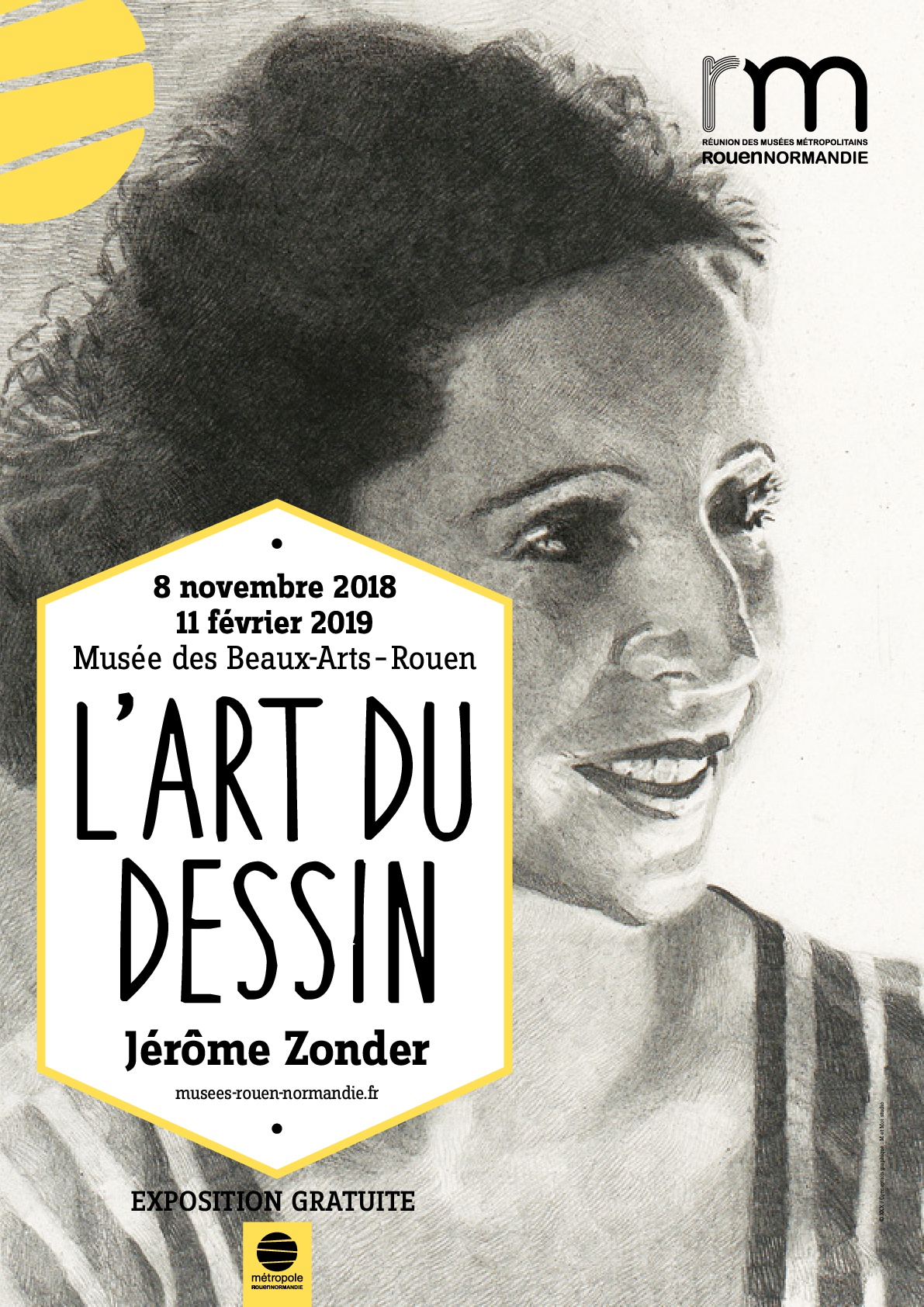
GILGIAN GELZER
Gilgian Gelzer was born in 1951 in Berne, Switzerland. Since the 1980s, he leans his drawing practice on one of its essential component: The line. He deploys in front of the spectator a complex web of lines with a great force of abstraction, which is enough for itself and never resend to anything else. Nor calligraphy, nor automatic gesture, Gilgian Gelzer’s line is Energy, the incarnation of the movement of the body.
Through format sometimes huge, which is usually rare when working on paper, the artist develops a free and open language. He renews the perception of drawing with his traced lines drawn with graphite pen and colour pens, contour lines or web, frontier lines that separates or link lines that gather… Under his pen, a space builds itself, sometimes saturated with dense lines, sometimes loose. Sometimes you lose yourself in the tangling lines while following a single line that walks and strays. It is all a matter of rhythm.

SARKIS
Born in 1938 in Istanbul, Sarkis has explored since the beginning of his carrier in the 1960s many techniques, from painting to video, and to installations.
As part of the drawing season, not only drawings are presented, but also some of the artist’s works echoing the subject thanks to a game on the line, the colour, and the memories. In the three propositions presented at the museum, the line is always only transitory, erasing right after being traced. In the videos, with a great economy of means and gestures, and with a sober staging, Sarkis shows the diffusion of colour in water. Using a famous painting as a model, for instance The Scream (Munch, 1893) and a dancer from the Japanese artist Hokusai, he traces a simple colour line in water and lets it come to life – evoking the drawing next to it.
The series of photography immortalising the artist’s drawing on magic slates, les Dessin disparus (“The lost drawings”), extends the reflexion on the notion of erasing and memory.
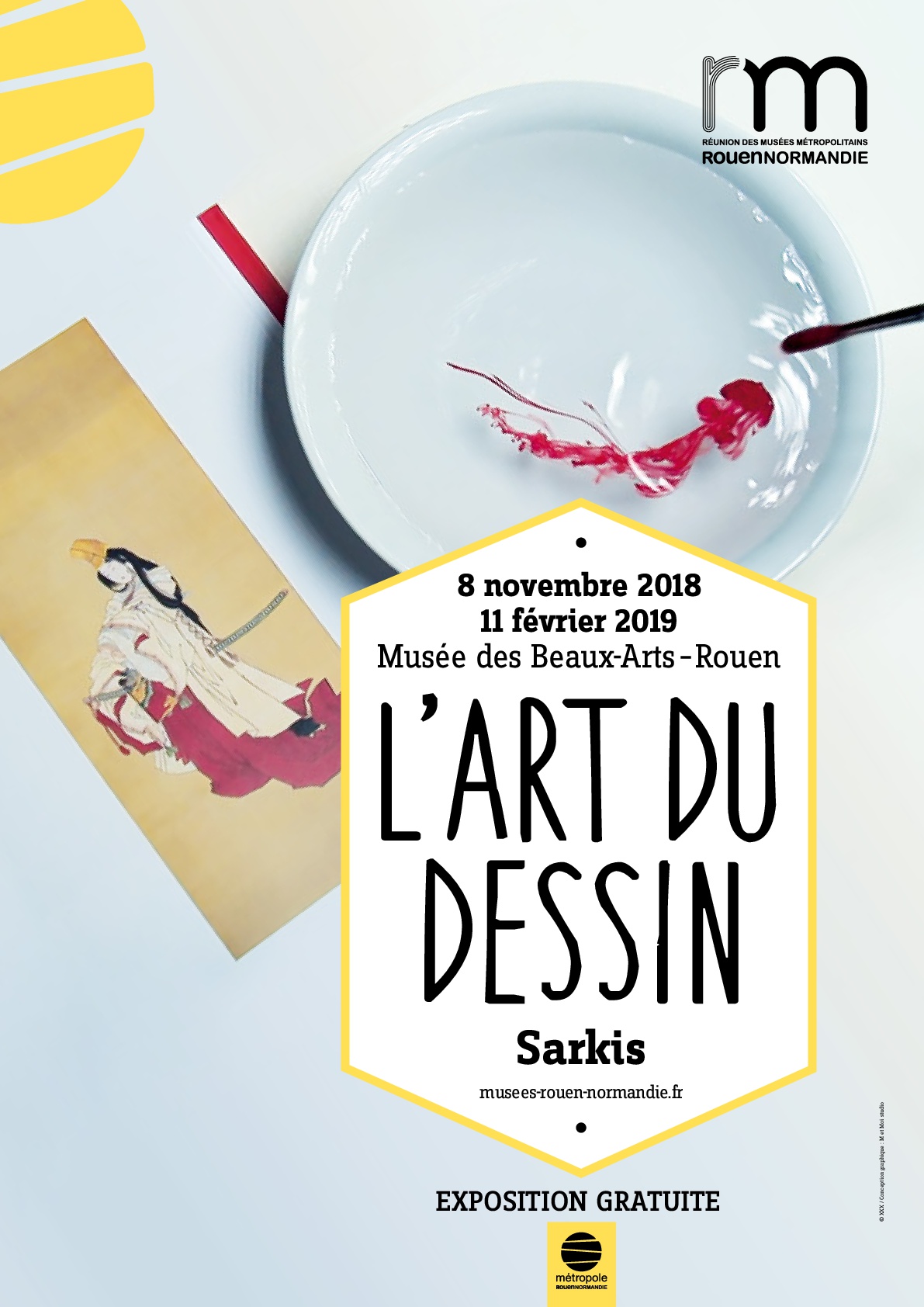
This event is free for all
MUSÉE DES BEAUX-ARTS
Esplanade Marcel-Duchamp 76000 Rouen
Tél. : 02 35 71 28 40
Open everyday from 10h to 18h.
Closed on tuesdays, December 25th , January 1st ans May 1st
Retrouvez aussi les actualités de la RMM sur :

